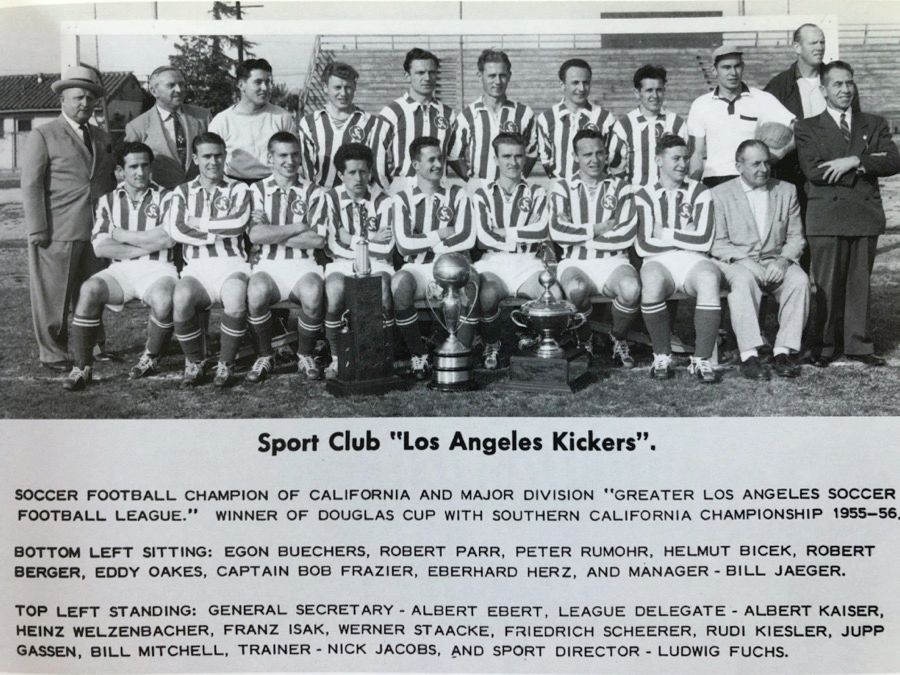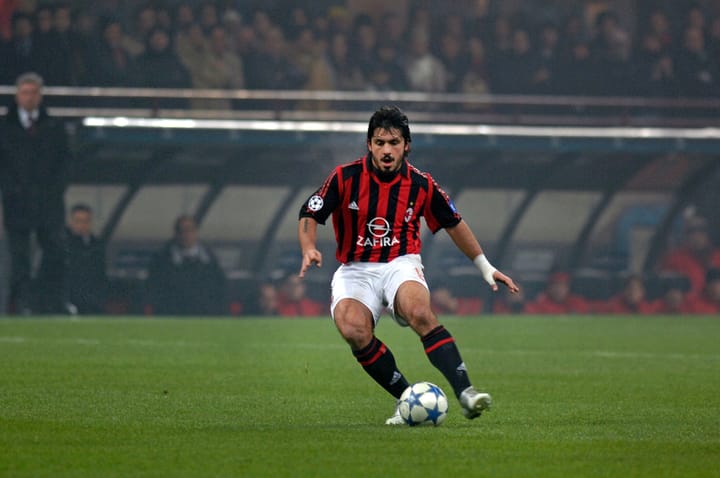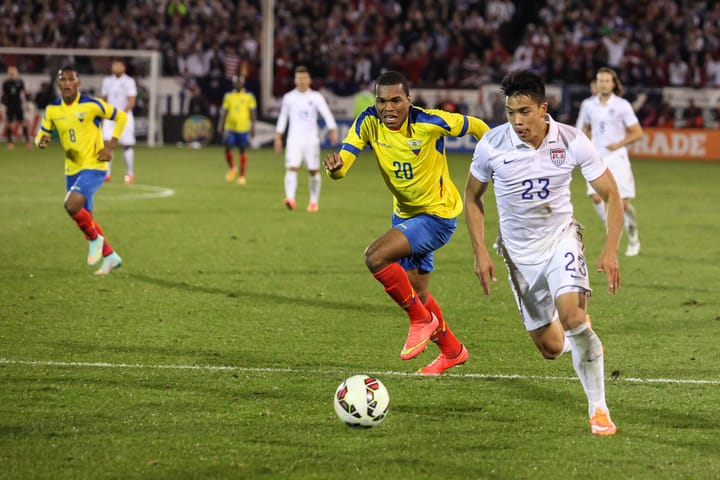The Evolution of Professional Soccer in California: A Comprehensive History
In this article we give an overview of the evolution of professional soccer in the Golden State of California.

Soccer has captured the hearts of millions of fans around the world. Its popularity transcends borders and cultures, making it the most widely played and watched sport globally. In this article, we will explore the rich history of professional soccer in California. From the early amateur days to the establishment of professional leagues, we will delve into the evolution of soccer in the Golden State.
The roots of soccer in California can be traced back to the late 19th century, when the Southern California Foot Ball League was founded in 1902. The league, later renamed the Greater Los Angeles Soccer League (GLASL), became the mainstay of amateur soccer in the region. Early champions included the Los Angeles Athletic Club, Guernsey S.C., and Los Angeles United. However, soccer in Los Angeles lagged behind San Francisco in terms of growth and organization.
In the 1920s, organized college soccer arrived in California, but it was dominated by San Francisco for several years. UCLA's soccer team began play in 1937, and the Los Angeles Scots became the first Los Angeles-based amateur team to win the Senior Challenge Cup in 1941 and 1942. Despite these achievements, soccer in Los Angeles remained isolated from the rest of the country.
A seminal moment in the history of Los Angeles soccer came in 1951 with the formation of the Los Angeles Kickers soccer club. Albert Ebert and Fritz Ermit founded the Kickers, who quickly became a force in the Greater Los Angeles League (GLASL). They won the California State Cup in 1956 and went on to win seven consecutive State Cup titles between 1958 and 1965. This dominance ended northern California's long reign in the California State Cup.

The Kickers also found success in the U.S. Open Cup, reaching the finals in 1958, 1960, and 1964. They emerged as champions in 1958, becoming the first west coast club to win a national title. The 1960 final was particularly memorable, featuring a clash between the Al Zerhusen-led Kickers and the Alex Ely-led Philadelphia Ukrainians. The match went into overtime and ended in a 5-3 victory for the Ukrainians. In 1964, they won their last Open Cup by finally beating the Philadelphia Ukrainian Nationals over two matches.
In the late 1960s and early 1970s, professional soccer arrived in California with the establishment of a handful of professional soccer clubs playing in the North American Soccer League (NASL).
Los Angeles Aztecs (1974-1981)
The Los Angeles Aztecs were founded in 1974, during a time when soccer was gaining popularity in the United States but was still far from the mainstream sport it is today. The NASL, established in 1968, was at the forefront of promoting soccer in North America, and the introduction of the Aztecs brought the game to the entertainment capital of the world, Los Angeles. The team played its home games at various stadiums throughout its existence, including the Los Angeles Memorial Coliseum and the Rose Bowl.
The Aztecs made a significant impact in the soccer world by signing international stars. The most notable was George Best, a Northern Irish footballer considered one of the greatest players of all time. Best's arrival in 1976 brought a level of skill and charisma that elevated the team's play and drew attention to the league. His presence, along with that of other international players, helped boost the Aztecs' profile both locally and internationally.
Despite their on-field successes, including winning the NASL Championship in 1974, the Aztecs faced several challenges. Soccer was still a growing sport in the U.S., and the team struggled with financial issues and fluctuating attendance. The NASL itself was experiencing instability, with teams folding and the league facing an uncertain future. The Los Angeles Aztecs folded in 1981, but their legacy in American soccer is significant.
San Diego Sockers (1978–1984)
The San Diego Sockers were originally founded in 1978 as part of the North American Soccer League (NASL), the then-premier soccer league in the United States. The team quickly established itself as a competitive force, attracting talented players and a growing fan base. Their NASL tenure saw them reach the playoffs several times, although a league championship eluded them. The Sockers played their home games at San Diego Stadium, which would later be known as Qualcomm Stadium.
With the decline and eventual collapse of the NASL in the early 1980s, the Sockers transitioned to indoor soccer, joining the Major Indoor Soccer League (MISL). This move marked the beginning of an era of dominance for the franchise. Indoor soccer, with its fast pace and high-scoring games, was a perfect fit for the Sockers, who quickly adapted to the style of play. The team's success in the MISL was unparalleled. They won numerous championships, becoming the league's most successful team. This period saw the emergence of star players like Juli Veee, Branko Segota, and Steve Zungul, who became household names among soccer fans in San Diego and across the country.
San Jose Earthquakes (1974–1982)
The origins of the San Jose Earthquakes date back to 1974, when they were founded as an expansion team in the NASL. The team quickly became a focal point for soccer in Northern California, attracting a loyal fan base. During their NASL years, the Earthquakes were known for their competitive spirit and passionate supporters, though they never captured an NASL championship. They played at Spartan Stadium, which was renowned for its intimate and electrifying atmosphere.
Following the collapse of the NASL in 1984, the Earthquakes underwent a period of transition. They played in various leagues, including the Western Soccer Alliance and the American Professional Soccer League, but these were short-lived ventures. The team eventually ceased operations, leaving a void in the San Jose soccer scene.
In 1996, the San Jose Clash was established as one of the original teams in the newly formed MLS. The Clash, which was essentially the rebirth of the Earthquakes franchise under a new name, brought top-tier professional soccer back to San Jose. In 2000, the team rebranded back to the San Jose Earthquakes, reconnecting with its historical roots and fan base.
California Surf (1978–1981)
The California Surf was a professional soccer team based in Anaheim, California, that played in the North American Soccer League (NASL) from 1978 to 1981. Though their tenure in professional soccer was brief, the Surf's history provides a glimpse into the evolving landscape of soccer in the United States during a pivotal period.
The California Surf was established in 1978, during a time of expansion and growing interest in soccer in the United States. The NASL, established in 1968, was seeking to capitalize on the increasing popularity of soccer, and the addition of teams like the Surf was part of this expansion strategy. The team was based in Anaheim and played their home games at Anaheim Stadium, primarily known as a baseball venue.
On the field, the Surf's performance was mixed. They managed to make the playoffs in their first three seasons, demonstrating a competitive spirit and a capacity to challenge more established teams. However, they never advanced beyond the first round of the playoffs, and a league championship remained out of reach.
One of the key challenges for the Surf, as with many NASL teams of the time, was building a consistent and loyal fan base. Soccer was still gaining a foothold in the American sports landscape, and drawing fans away from more established sports like baseball, basketball, and American football was a significant hurdle. Additionally, the team faced the challenge of building a distinct identity in a market that was already saturated with professional sports teams.
Despite their struggles, the California Surf made notable contributions to the soccer scene in Southern California. They brought in international players who added a level of skill and experience to the team. The Surf also played a role in developing local talent, providing a platform for American players to hone their skills against seasoned international competitors.
The California Surf ceased operations after the 1981 season, a victim of the financial instability that plagued many NASL teams and eventually led to the league's collapse. Their legacy, however, is tied to the broader narrative of soccer's development in the United States.
The 1990s marked a turning point for professional soccer in California with the establishment of Major League Soccer (MLS) in 1993. The newly formed league aimed to make soccer a preeminent sport in the United States. California became a key market for MLS, with teams like the Los Angeles Galaxy and the San Jose Earthquakes making their mark.
The success of the 1994 FIFA World Cup, held in the United States, further fueled interest in soccer. The tournament visited two stadiums in California, Stanford and the Rose Bowl Coliseum and showcased the talent and passion of players from all over the world, with the United States emerging as a brave contender. Thanks to the World Cup, soccer gained recognition and inspired a new generation of players in California and beyond.
The 21st century brought further growth and expansion to soccer in California. The MLS continued to thrive, with the Los Angeles Galaxy becoming one of the most successful teams in the league. The arrival of international stars like David Beckham and Zlatan Ibrahimović elevated the profile of the sport in the state.
In 2018, the LAFC began playing in the MLS, and they quickly made a mark with their dynamic style and strong fan support. The team plays its home matches at the Banc of California Stadium, a state-of-the-art venue in the heart of Los Angeles. Known for their black and gold colors, LAFC has gained a reputation for an exciting brand of football, attracting high-profile players and coaches. The club's passionate supporters, especially the 3252 Independent Supporters Union, create a vibrant and electric atmosphere during matches, contributing to LAFC's rapidly growing presence in the North American soccer landscape. LAFC won their first MLS Cup in 2022, beating the Philadelphia Union in a breathtaking match.
In the 2025 season, another Californian professional soccer club will be added to Major League Soccer, San Diego FC.
The history of professional soccer in California is a testament to the sport's enduring appeal and its ability to unite communities. From the early amateur days to the establishment of professional leagues, the journey of soccer in the Golden State is filled with triumphs, challenges, and moments of glory. The passion and dedication of players, fans, and organizations have shaped soccer into a beloved sport in California and continue to drive its growth in the 21st century.




